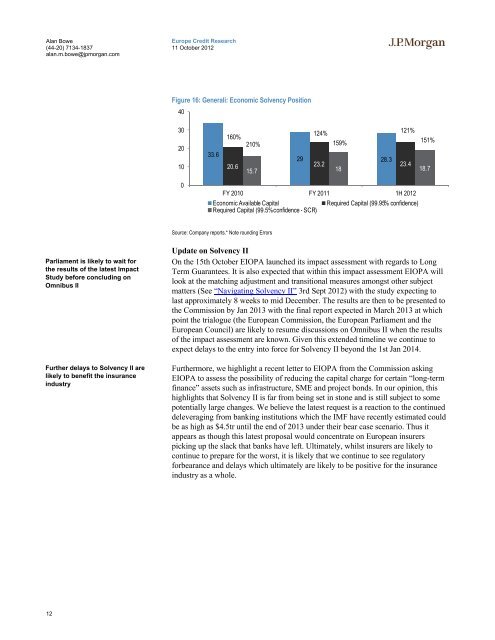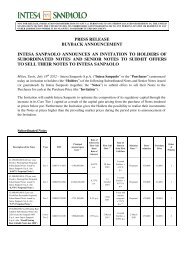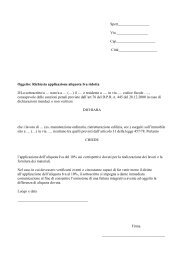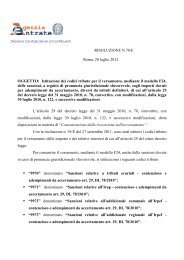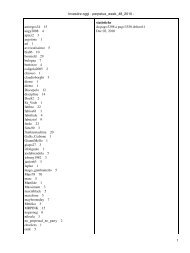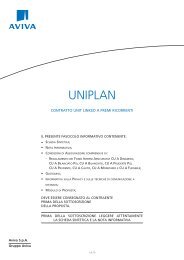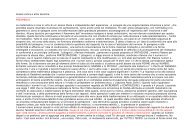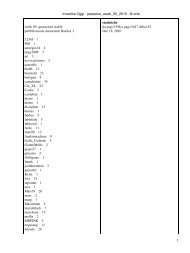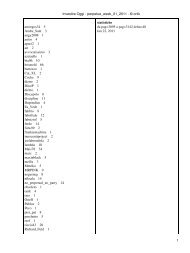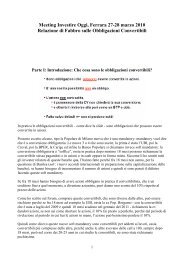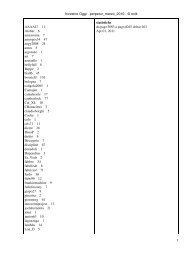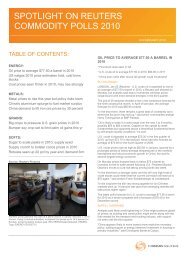Generali - InvestireOggi
Generali - InvestireOggi
Generali - InvestireOggi
You also want an ePaper? Increase the reach of your titles
YUMPU automatically turns print PDFs into web optimized ePapers that Google loves.
Alan Bowe<br />
(44-20) 7134-1837<br />
alan.m.bowe@jpmorgan.com<br />
Parliament is likely to wait for<br />
the results of the latest Impact<br />
Study before concluding on<br />
Omnibus II<br />
Further delays to Solvency II are<br />
likely to benefit the insurance<br />
industry<br />
12<br />
Europe Credit Research<br />
11 October 2012<br />
Figure 16: <strong>Generali</strong>: Economic Solvency Position<br />
40<br />
30<br />
20<br />
10<br />
0<br />
33.6<br />
160%<br />
210%<br />
Source: Company reports.* Note rounding Errors<br />
124%<br />
29 28.3<br />
20.6 23.2 23.4<br />
15.7 18 18.7<br />
FY 2010 FY 2011 1H 2012<br />
Economic Available Capital Required Capital (99.95% confidence)<br />
Required Capital (99.5% confidence - SCR)<br />
Update on Solvency II<br />
On the 15th October EIOPA launched its impact assessment with regards to Long<br />
Term Guarantees. It is also expected that within this impact assessment EIOPA will<br />
look at the matching adjustment and transitional measures amongst other subject<br />
matters (See “Navigating Solvency II” 3rd Sept 2012) with the study expecting to<br />
last approximately 8 weeks to mid December. The results are then to be presented to<br />
the Commission by Jan 2013 with the final report expected in March 2013 at which<br />
point the trialogue (the European Commission, the European Parliament and the<br />
European Council) are likely to resume discussions on Omnibus II when the results<br />
of the impact assessment are known. Given this extended timeline we continue to<br />
expect delays to the entry into force for Solvency II beyond the 1st Jan 2014.<br />
Furthermore, we highlight a recent letter to EIOPA from the Commission asking<br />
EIOPA to assess the possibility of reducing the capital charge for certain “long-term<br />
finance” assets such as infrastructure, SME and project bonds. In our opinion, this<br />
highlights that Solvency II is far from being set in stone and is still subject to some<br />
potentially large changes. We believe the latest request is a reaction to the continued<br />
deleveraging from banking institutions which the IMF have recently estimated could<br />
be as high as $4.5tr until the end of 2013 under their bear case scenario. Thus it<br />
appears as though this latest proposal would concentrate on European insurers<br />
picking up the slack that banks have left. Ultimately, whilst insurers are likely to<br />
continue to prepare for the worst, it is likely that we continue to see regulatory<br />
forbearance and delays which ultimately are likely to be positive for the insurance<br />
industry as a whole.<br />
159%<br />
121%<br />
151%


